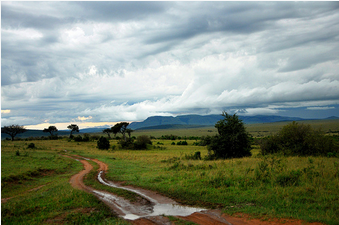Before the team lead by Stephen Bailey-Smith with Kenyan policy makers at the African Development Bank Annual meetings, Global Evolution was positioned long duration in the local bond curve, and overweight in the Eurobonds. However, after their meeting, they reinforced “our constructive sentiment towards the country’s longer-term prospects and happy with our investment positions.”
The key message from Kenya’s policy makers is that the high twin deficits are a necessary short-term evil in order to overcome the country’s infrastructure deficit. The strategy is being broadly practiced across the African continent. “But Kenya is one of the few countries where we believe it will proceed without jeopardizing macroeconomic stability.” Says Bailey-Smith.
“Our view is not uniformly held by the market and/or the rating agencies, who are concerned by the rate of debt accumulation, especially ahead of the elections in August 17.Certainly, the plan to spend KES45bn (USD450m) on elections discussed during our meetings does seem a tad excessive and reiterates for us one of the key negatives for the credit: the deeply ingrained ethnic fault lines in the political system, which raise governance costs and have arguably been exaggerated under the shift towards more local government.” He explains.
For the strategist, it is important to note that Cabinet Secretary Rotich will deliver the final budget to parliament In June and we suspect it will be more constrained than the April draft, which proposed a budget deficit of 9.3% of GDP. Moreover, the outcome for FY15/16 looks more like a deficit of 6.9% of GDP rather than the planned 7.9% of GDP reflecting the ongoing struggle to deliver on spending pledges. “We remain reasonably confident that the government will not allow their debt financing positon to become disorderly. Crucially, there appears to be a couple of prudent guidelines including recurrent spending being met by revenue and debt in NPV terms not exceeding 50.0% of GDP.”
Since the provisional budget was released there also appears to have been a change in the plans for deficit financing with more coming from concessional and less from commercial sources. Some 40.0% will come from domestic borrowing. Of the 60.0% external borrowing, some 46.0% will have a concessional element. “It is also important to take into account the huge investment spending going into the Single Gauge Railway which has a budget of around KES180bn or 2.6% of GDP. We remain reasonably constructive on the combination of the revamped rail and port facilities, plus the marked progress in energy generation and distribution to deliver significant productivity growth to the economy.”
Certainly this was the view of the relatively new CBK Governor Njoroge, who took up his position after nearly 20 years working at the IMF as a macroeconomist. Well known for his strict religious lifestyle and tough stance on corruption, “his appointment is positive not least because it demonstrates the President’s priorities” says Bailey-Smith.
Interestingly, the Governor feels the recent decline in the C/A deficit to 6.8% of GDP in 2015 from 9.8% of GDP in 2014 will continue despite the large fiscal deficit. He expects the C/A deficit to be around 5.5% in 2016 and 5.8% in 2017.
The improvement comes from a combination of lower imports (especially fuel), higher service and remittance inflows, albeit the improvement is partly due to better measurement. Interestingly, there have also been upward revisions to the FDI numbers suggesting the country now runs a much smaller basic balance deficit. He also suggested foreign holdings of local debt were a very minor 7.0% of total, suggesting limited currency vulnerability from global market risk.
“The reasonably contained BOP suggests continued currency stability, which should allow inflation to fall further and allow the CBK to continue easing monetary policy in coming months.” Bailey-Smith concludes.

